| 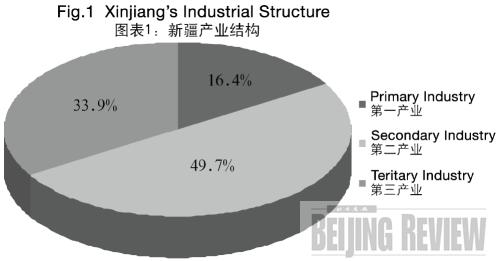
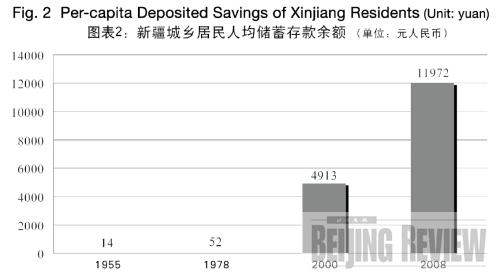
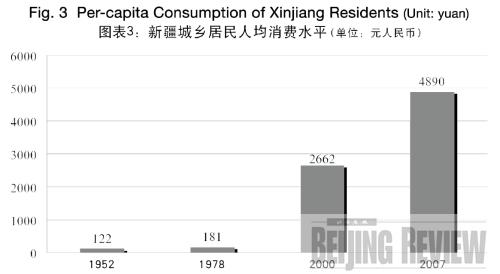
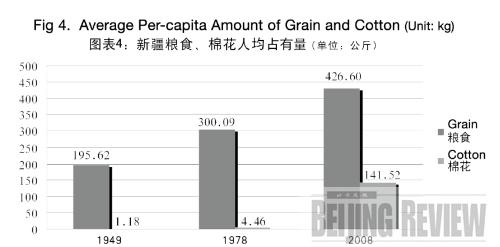
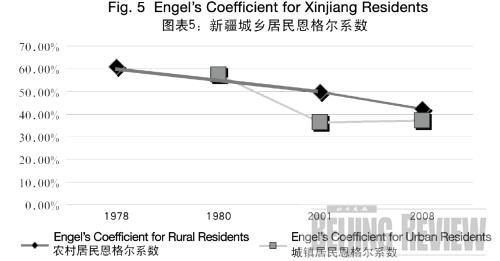
Foreword
Extending through the northwest of the People's Republic of China (PRC) is the Xinjiang Uygur Autonomous Region, which accounts for about one sixth of the country's land territory.
Historically, Xinjiang was the passage for land transport and civilizational contact between Asia and Europe. The famous Silk Road linking the ancient civilizations of the East and the West went through this vast land. Its geographical location has resulted in Xinjiang's distinctive feature: coexistence and integration of diverse peoples and their cultures. Since the first century BC, the region has been an important part of China, and played a significant role in the construction and development of a unitary multiethnic country.
Prior to the founding ceremony of the PRC on October 1, 1949, Xinjiang witnessed its peaceful liberation. The diverse peoples of Xinjiang, who had undergone great sufferings together with the people in other parts of the country, became the masters of the state, and Xinjiang entered a new era of development.
Over the past 60 years, under the leadership and care of the Communist Party of China and the Central Government, and with the support and assistance of all peoples in other parts of the country, the Xinjiang people of various ethnic groups through arduous efforts have made great advances in building a comfortable life and a beautiful home. The region has made a historic leap out of underdevelopment, with tremendous changes taking place in the areas north and south of the Tianshan Mountains.
The development and progress of the autonomous region should be attributed to the concerted efforts by all peoples of Xinjiang under the banner of solidarity of all ethnic groups, as well as to the success of China's policies on ethnic minorities.
I. Swift Economic Development
Before the founding of New China in 1949, Xinjiang had a natural economy mainly comprised of farming and animal husbandry. Local development was stagnant, with low productivity levels and underdeveloped production modes. There was not an inch of railway, no large-scale farms or large fertile fields. Privately owned small workshops were what signified industry here. The people led a life of poverty and hardship.
Since 1949, particularly after China's reform and opening-up in the late 1970s, Xinjiang has entered an era of rapid economic and social progress and enhanced comprehensive strength, with the local residents enjoying the most tangible benefits. Proceeding from the state development strategy and the fundamental interests of the people of various ethnic groups, the Chinese Government has paid great attention to the development and construction of Xinjiang. It has made it a national basic policy to help the frontier areas develop their economy for the common good and wealth, and worked out timely a series of strategic decisions to promote Xinjiang's development. Xinjiang has been given priority in the national strategy launched in 2000 to develop the western regions.
Over the years, Xinjiang has made full use of its own advantages, and focused on economic restructuring and changing the modes of economic growth, infrastructure construction and environmental protection, along with improvement of people's livelihood and basic public services, so as to keep the development of Xinjiang in pace with the national development, and to ensure beneficial interaction between the development of southern Xinjiang and that of northern Xinjiang.
—Comprehensive strength remarkably enhanced. Calculated at constant prices, the local GDP in 2008 stood at 420.3 billion yuan, which is 86.4 times higher than that of 1952 (three years before the establishment of the Xinjiang Uyghur Autonomous Region), up 8.3% on average annually; 19.6 times over that of 1978 (the first year of reform and opening-up), up 10.4% on average annually; and 2.2 times above that of 2000 (launching of the western development campaign), up 10.6% on average annually. Local revenues reached 36.106 billion yuan in 2008, which is 4.56 times that of 2000, 50.57 times that of 1978, and 208.71 times that of 1955.
—Economic structure gradually optimized. In recent years, Xinjiang has witnessed rapid growth of its industry, agriculture, and service sector. As industrialization quickens, industry has replaced agriculture to become the pillar economic sector. Tertiary industry, or services, is also playing a prominent role in economic advancement. Wholesale and retail businesses and catering industry have expanded swiftly, while post and telecommunication networks have been widely set up, and new sectors, such as real estate and finance, are booming. In 2008, primary, secondary and tertiary industries accounted for, respectively, 16.4%, 49.7% and 33.9% of the local GDP.
—Infrastructure construction reinforced. Given its "irrigation farming in oases," Xinjiang has built a number of large modern water conservancy projects, such as the Kizil Reservoir in Aksu and the Ulug Ata Reservoir in Hotan, in addition to canals, ditches and seepage control projects, which have greatly increased the amount of water diverted, reservoir storage capacity and effectively irrigated areas. The completion of the Tarim River improvement project in 2008, with an investment of more than 10 billion yuan, put an end to the river's 30-year history of running dry for some 300 km in its lower reaches. Efforts in building shelterbelts of north, northeast and northwest China, greening the plain areas, returning farmlands to forests and returning pastures to grasslands have also improved farming conditions. Drip and spray irrigation is now available to nearly 800,000 ha of farmlands, thus saving five billion cubic meters of water annually.
By the end of 2008, Xinjiang had completed eight national highways, 66 inter-province highways, and more than 600 county-level roads, with the combined mileage reaching 147,000 km. A highway network has taken shape centering on Urumqi (capital city of the Xinjiang Uyghur Autonomous Region), with roads surrounding the two basins (Junggar and Tarim) and crossing the two large deserts (Gurbantunggut and Taklimakan) and the Tianshan Mountains, to link southern and northern Xinjiang. With the completion of railways going through southern and northern Xinjiang and the Lanzhou-Xinjiang double-track rails, the total length of railroads in Xinjiang surpassed 3,000 km by 2008. Civil aviation has expanded swiftly, and a network with 114 domestic and international flight routes has formed, radiating from Urumqi and connecting some 70 Chinese and foreign cities and 12 prefectures in Xinjiang, with flight routes totaling over 160,000 km. Xinjiang now boasts the largest number of airports and the longest flight routes among all provinces and autonomous regions in China.
The post and telecommunication industry has seen rapid growth. A complete modern communications system has been put in place, composed of program-controlled exchanges, fiber-optical communication, digital microwave, as well as satellite and mobile communications; and the entire region has been covered by optical cable, digital microwave and satellite communications.
—Overall agricultural production capacity notably enhanced. Xinjiang boasts abundant agricultural resources. In recent years, the industrialized production of grain, cotton, special fruit and quality livestock farming as well as agriculture facility building have quickened, and industrialized belts of advantageous and special farming products are taking shape. The fundamental status and overall production capacity of agriculture have both been enhanced, and the effective supply of agricultural products is increasing multifold.
In 2008, agricultural added value reached 69.1 billion yuan, 1.4 times more than that of 2000; and the total output of grain was 10.2285 million tons, leaving a slight surplus after meeting local demand. As one of China's major bases of commercial cotton, Xinjiang produced 3.0155 million tons of cotton in 2008, ranking first in China in terms of total output, per-unit output and per-capita output.
Modern animal husbandry has accelerated its growth, and it now accounts for 27% of local agricultural output value. In 2008, meat output stood at 1.7549 million tons, up 95% from 2000. Fruit production is also increasing quickly. In 2008, the total area of fruit trees exceeded one million ha, and fruit output totaled over four million tons, worth six billion yuan in output value.
|
